This post may contain affiliate links. Please read our disclosure policy.
Frozen vegetables are one of the most economical, readily available ways to add more veggies to your diet. These simple tips will teach you how to properly season and cook frozen mixed vegetables for the best tasting sides, and how to add them to all sorts of recipes when fresh isn’t an option.
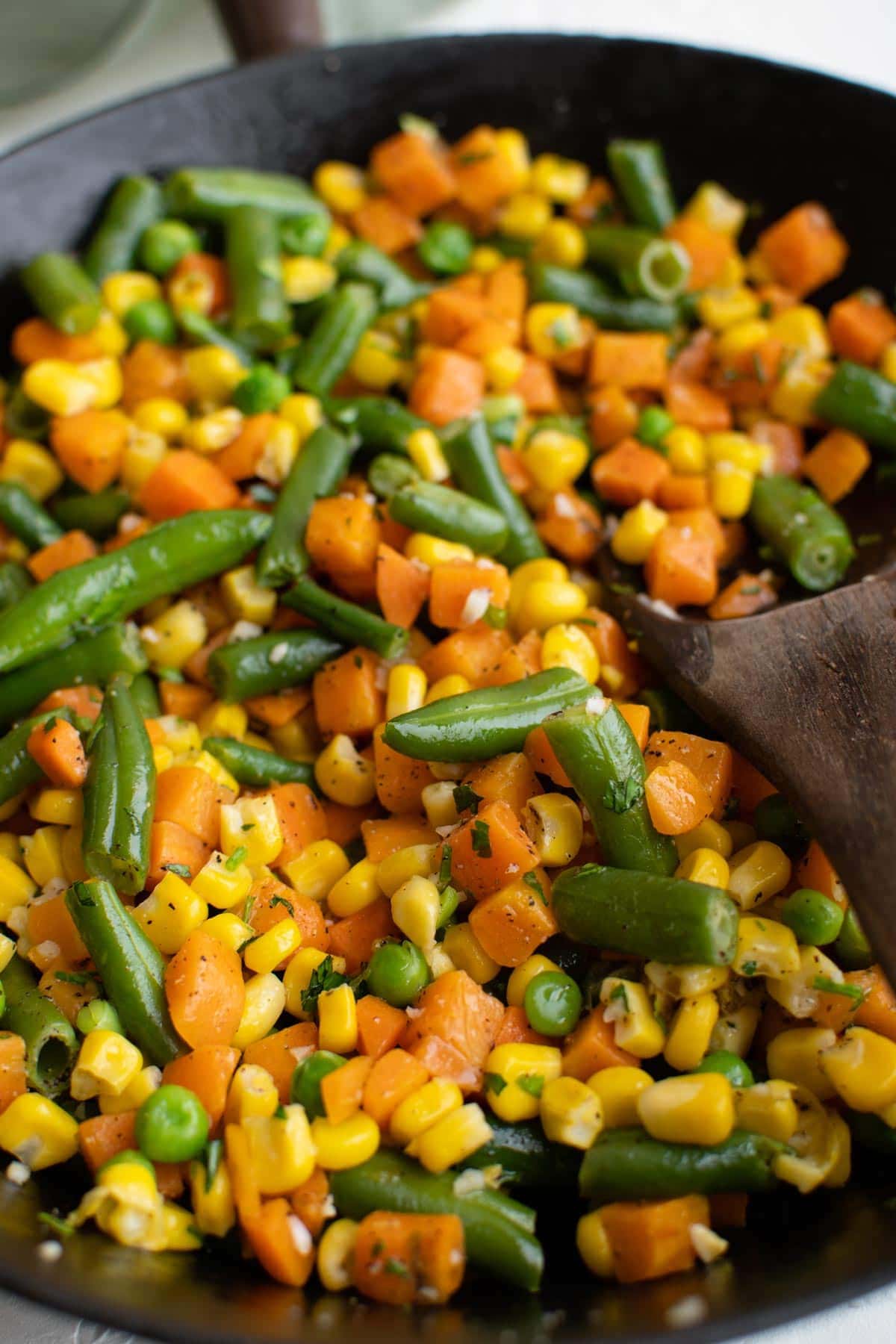
Let’s face it, one bad experience with frozen corn can ruin all frozen veggies for you for life. But when you know how to cook frozen vegetables the right way, it makes all the difference. Follow these tips and I’ll have you dancing down the freezer aisle at the supermarket in no time!
Why We Love Frozen Veggies
While fresh vegetables are the optimal choice, they’re not always the most practical. They can be expensive, the quality can vary and your favorites might be seasonal and hard to find. Plus if you rely on delivery services for your groceries, the quality of produce can vary immensely.
Frozen is an excellent alternative, for a variety of reasons which may vary from family to family.
- They’re Fast – Frozen can often be prepared quickly and with little effort, making them a great option when you’re strapped for time. Unlike my roasted vegetables recipe that takes nearly an hour, with frozen you’re done in half the time.
- Year Round Availability – They are readily available all year round, unlike fresh veggies that are usually seasonal, like butternut squash and brussels sprouts.
- Healthy – Vegetables are generally frozen at their peak and immediately after harvesting, so they retain most if not all of their nutrients.
- Easy on Your Wallet – Frozen veggies are budget friendly; you can usually get a bag of frozen mixed vegetables for a few dollars, sometimes less.
- They Last Longer – They have a longer shelf life, and will remain fresh in your freezer for up to 6 months, sometimes longer.
What you need
Ingredient Notes
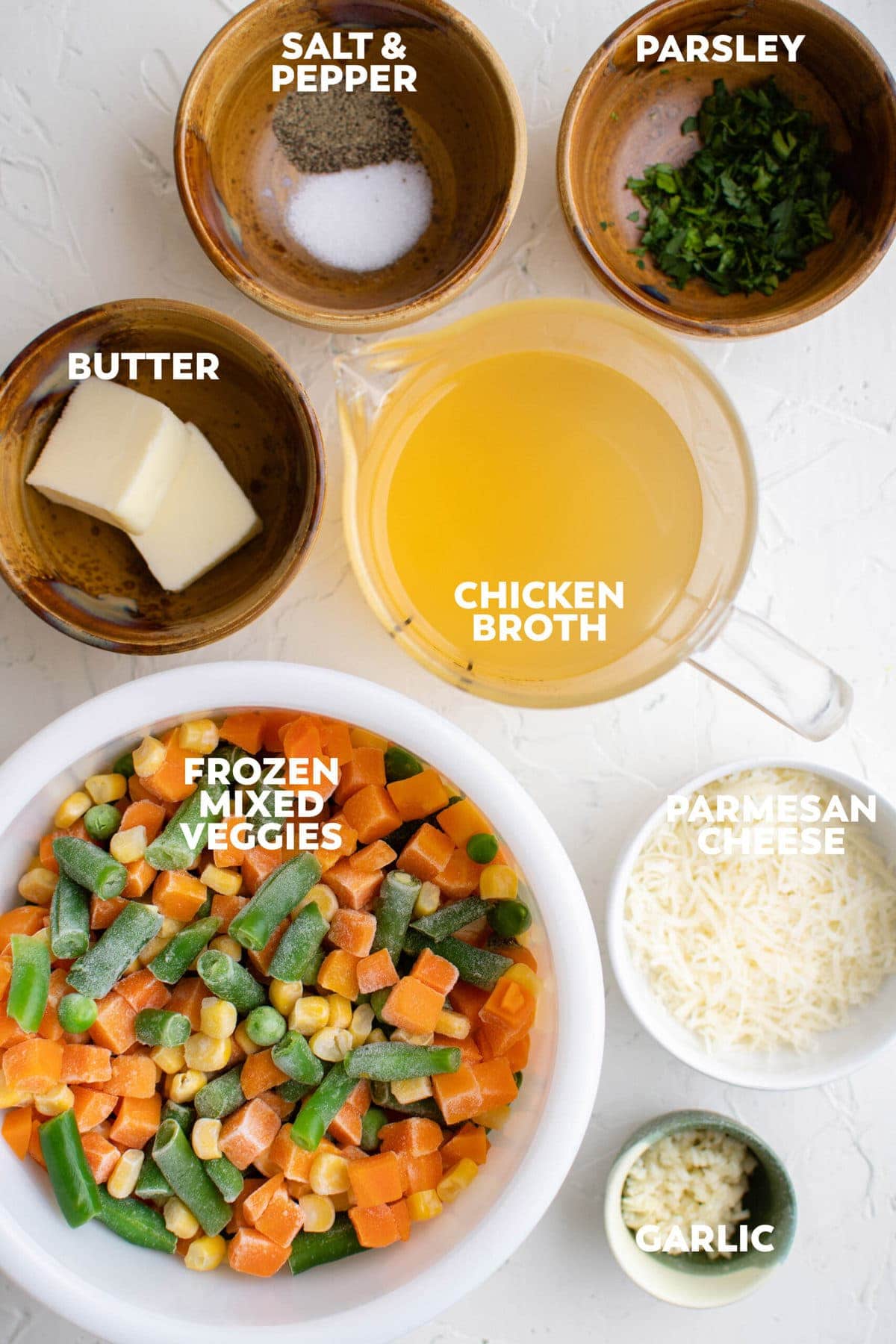
How to Make Frozen Vegetables Taste Better
They can be kind of blah, so here’s a little trick I learned for making frozen veggies taste better. This simple hack will yield a great tasting, budget-friendly side dish. Plus, while the recipe below is for a mixed veggie bag, this will work for almost any freezer vegetables you can find.
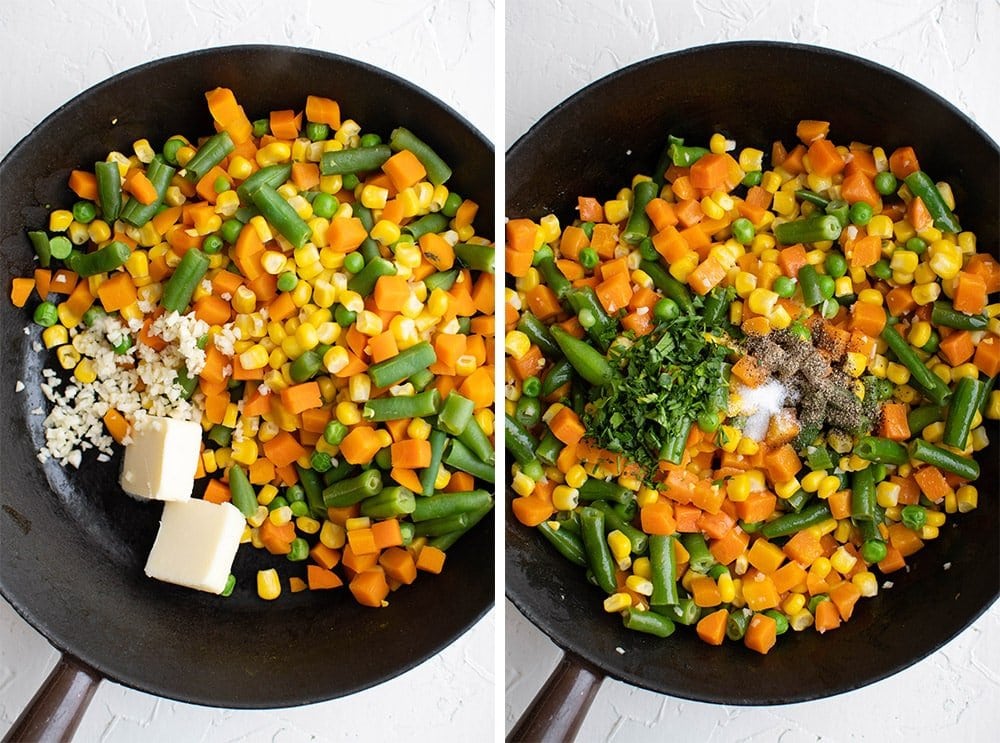
- In a deep skillet or saucepan, boil veggies in chicken broth. This adds extra flavor that boiling in water or steaming in the microwave just won’t give you. Drain the liquid out and keep them in the pan.
- Add butter and fresh minced garlic. The melted butter coats the vegetables and creates a sort of sauce and the garlic adds another layer of flavor.
- Stir in fresh minced parsley and parmesan cheese, and season with salt and pepper!
Once you learn how to cook your veggies like this, you’ll never turn your nose up at the freezer aisle again!
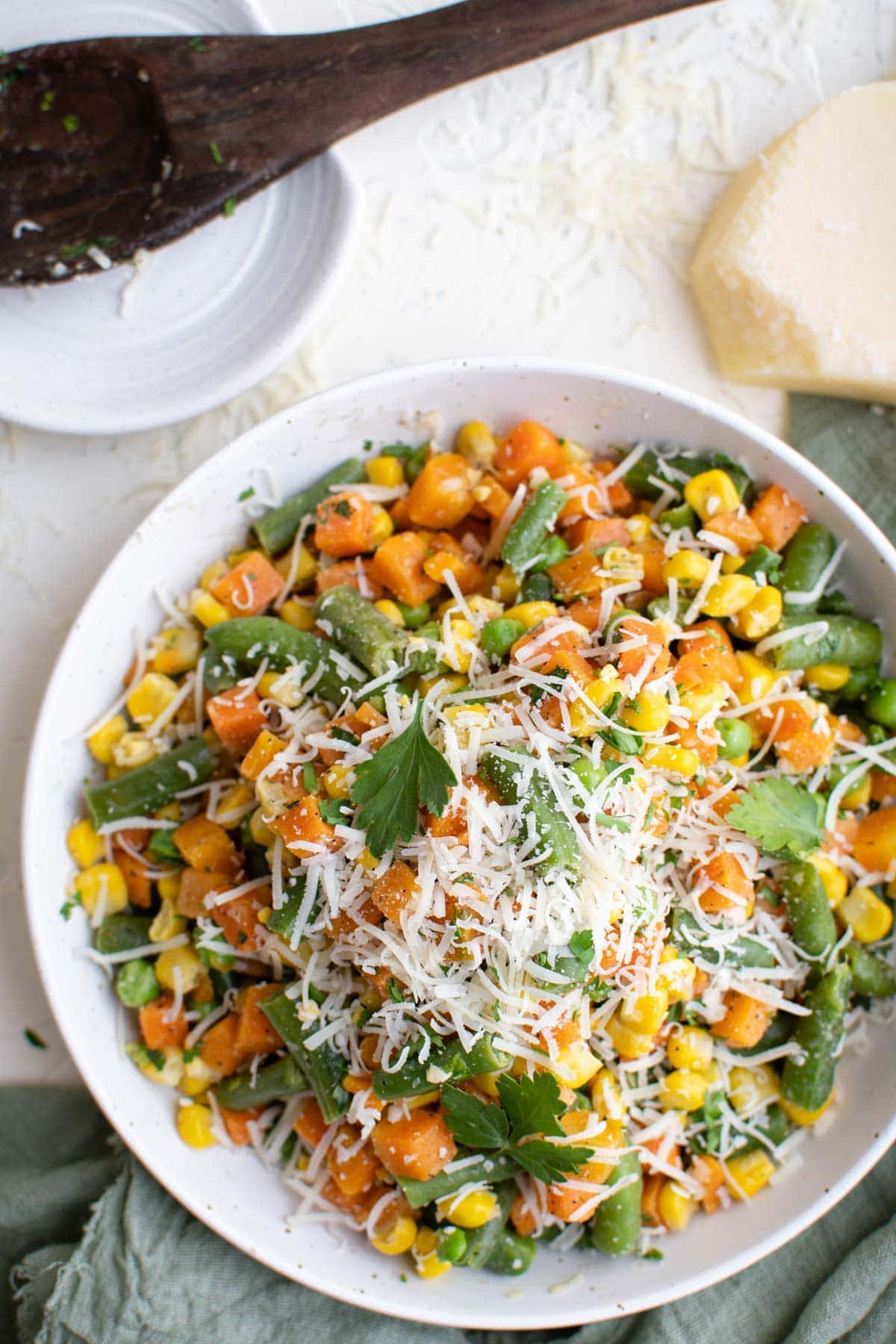
Frequently Asked Questions
Generally frozen vegetables will last 8-12 months if properly stored in a sealed, airtight container. Always check for a “use by” date because it can vary by brand or type. They can be refrozen if they defrosted a bit, but they may get ice crystal and clump together and this can affect the quality and flavor.
Vegetable freezing began as a convenience. Generally, vegetables are frozen at the peak of freshness, immediately after harvesting, so they retain most of their nutrients.
Canned vegetables have additives and preservatives that frozen ones don’t, making them the less healthy choice. Frozen packages occasionally do contain extra sugar or salt, so it’s important to read the labels and look for the USDA “U.S. Fancy” shield to find the most nutrient-rich products.
Most often, thawing is not needed. You can toss them into your pan in their frozen state. If all you want to do is heat them up, use a steamer. Just don’t boil – this will add moisture and make your veggies mushy.
There are definitely a few varieties of mixed veggies, but the most common is just a combo of carrots, peas, corn, and green beans. There are also mixed bags of stir fry veggies and Italian style.
How to use Frozen Vegetables in Recipes
Different vegetables can require different treatments and cooking methods, depending on their flavor, texture, and water content. For example, a lot of vegetables, like frozen broccoli florets, cauliflower, and even zucchini can be roasted from frozen in the oven or the air fryer. Toss them with some olive oil and seasoning (like salt and pepper), spread them in a single layer on a hot baking sheet pan, and roast at 450℉. Roasting times will vary.
Add frozen corn, peas, or mixed veggies to your favorite soup, stew, and smoothies without even thawing them. For casseroles like my Sloppy Joe Tater Tot Casserole, stir fries, and fried rice, thaw in the microwave or in the fridge before adding.
I use frozen veggies in a lot of recipes:
- Turkey Shepherd’s Pie
- Beef & Macaroni Soup
- One Pot Mexican Chicken and Rice
- Hamburger Soup
- Ground Beef & Noodles Stir Fry
Storage Tips
Storage and Reheating
Storage – When storing leftover veggies, it’s important to let them cool first. Then store them in an airtight container in the refrigerator for up to 3-4 days.
Freezing – While you technically can refreeze them, I wouldn’t recommend it. The texture just won’t be as pleasing the second time around.
Reheating – Reheat in the microwave for 30-60 seconds.
Helpful Tips
- Save time on Thanksgiving and use frozen sweet potatoes for Sweet Potato Casserole, frozen green beans for Green Bean Casserole or frozen cauliflower for Cauliflower Gratin.
- Add a squeeze of lemon or lime for a burst of freshness.
- When you’re sauteeing the vegetables, try adding some fresh spinach leaves.
- Use whatever fresh herbs you like – chives, rosemary, or thyme are great options.
- Make and keep some Homemade Garlic Butter on hand so you can make this recipe at a moment’s notice!
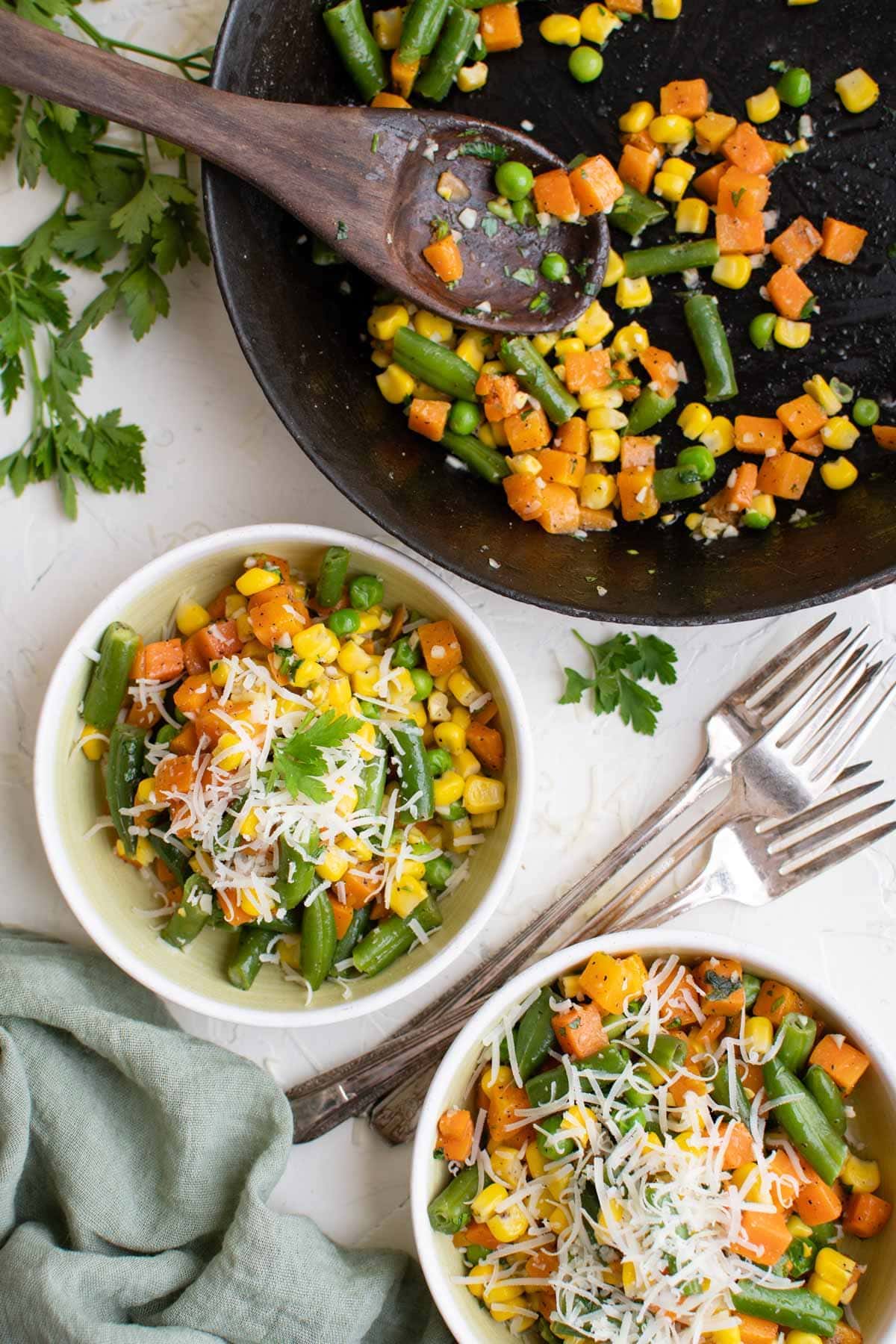
More Tips for Cooking Frozen Foods
Use your Air Fryer!
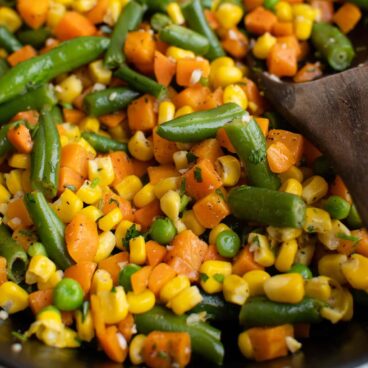
Garlic Butter Frozen Vegetables
Ingredients
- 16 ounce Package frozen mixed vegetables usually peas, carrots, green beans and corn
- 1 cup Low sodium chicken broth
- 2 cloves Garlic minced (1 teaspoon)
- 2 tablespoons Butter
- 2 tablespoons Grated Parmesan cheese fresh is best but packaged will work
- 1 tablespoon Fresh minced flat-leaf parsley
Instructions
- Heat chicken broth in a medium saucepan or large skillet oven medium heat until simmering. Add vegetables and cook for 5-10 minutes, stirring often, until heated through. Drain and return vegetables to the pan.
- Add butter and garlic to the pan and cook over medium heat for several minutes, stirring often, until butter is completely melted and coats the vegetables.
- Remove from heat. Season with salt and black pepper. Stir in fresh minced parsley and sprinkle on some Parmesan cheese, if desired.
Notes
- Nutritional information is approximate and will vary based on actual ingredients used.
- Recipe will feed 4-6 people as a side dish at roughly ½ to ¾ of a cup per serving.
- Feel free add other flavorings, like lemon or dill.
Nutrition
Nutritional Disclaimer Kristin Maxwell of “Yellow Bliss Road” is not a dietician or nutritionist, and any nutritional information shared is an estimate. For accurate calorie counts and other nutritional values, we recommend running the ingredients through your preferred online nutritional calculator. Calories and other nutritional values can vary depending on which brands were used.



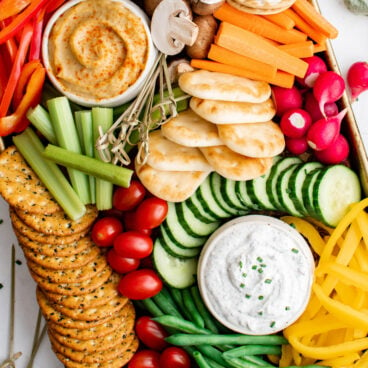

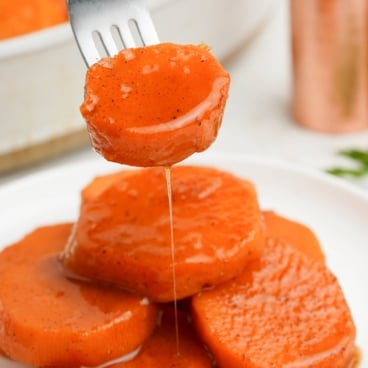
thank you tremendously for the time and effort to post this recipe. i’ve never known how to make frozen veggies taste good. i’ll be trying this but with veggie broth 🙂 much love
Can you use vegetable broth instead?
Of course!
Thanks for the recipe! I use this one when I need a last minute vegetable for guests! Very good!
That’s awesome Wendy! Thanks for stopping by.
I made a vegetable pot pie. I cook the vegetables 2 ten oz and double the chicken broth as directed. I mixed in cream of chicken soup and some chicken broth that was left over. Add a little butter and ground black pepper. I left out the salt because the chicken soup, butter and broth has salt.
My toping 1 cup all purpose flour, 1/4 c sugar 1/4 tsp salt, 1 tsp baking powder, if preferred leave out the sugar. Add 1 egg and mix until crumbly. Sprinkle over mix vegetable with 1/3 cup melted butter. It tasted delicious. I got a second serving. Will be making this again. Thanks I never knew you can cooked vegetables in chicken broth.
You are so welcome Kay! Awesome feedback.
Really enjoyed this last night! I doubled the recipe since I was taking the dish to a party and wanted to bring home leftovers. I added the juice from a 15 oz can of fire roasted diced tomatoes to the chicken stock. After cooking the frozen veggies and draining, I added the tomatoes to the mix. Also included about a teaspoon of dried dill.
Love the feedback Jon! Thanks for stopping by.
I would like to know the cost for your recipes. So I can download load them.
Great news! All the recipes on my site are free to use. You can save the links in your browser or print them and save them in a notebook.
I recently switched to plant based and am searching for easy and flavorful dishes. I adjusted this using vegetable broth and vegan “butter”. Very tasty and enough to take to work for lunch. A new entry in my plant based cookbook!
These mixed veggies were just what I needed for our meat loaf muffins and mashed potatoes! Very tasty and hubby who does not care for veggies ate these! Thank you for flavoring our veggie dish this evening!
You are so welcome Ruth! Thank you for the awesome feedback.
thank you for the wonderful ideas. I’m trying the vegetables in broth with garlic and parmesan cheese…. it definitely will spice things up around here! i like your website and look forward to following more of your recipes! THANK YOU FOR TAKING THE TIME TO POST!!!!!!
.
Hi Stacy! You are so welcome. Thank you for the awesome comment!
I don’t like the idea of throwing away the broth/stock. It can be used for another recipe right? It just feels bad to read “discard”. 🙂
Sure, you could save the broth and add it to a soup later.